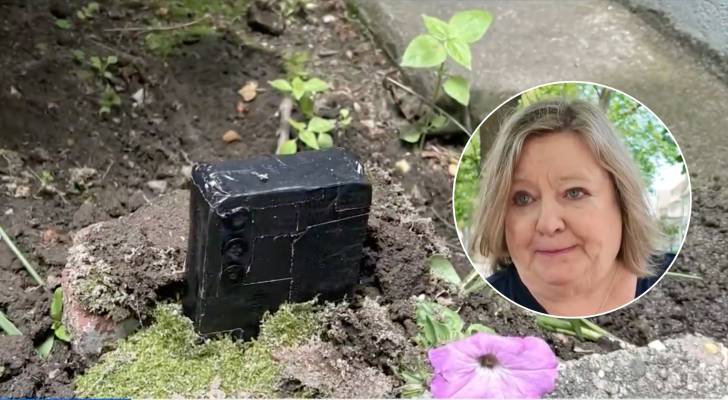Big Brother star’s real estate firm being sued in 11 states over claims of misleading agreements that cost homeowners thousands — why this type of contract is banned in more than 22 states


After turning heads on Big Brother, Amanda Zachman, the self-proclaimed villain of Season 15, stepped out of the spotlight and into real estate, founding brokerage firm MV Realty. But the controversy she stirred up on the small screen has followed her into her professional career. Don’t miss I’m 49 years old and have nothing saved […]
This finance personality freed herself from $300K in debt — by replacing her shame with strategy. Here’s how she helps others find purpose in their finances through ‘curiosity’
You might recognize her as @TheBudgetnista on TikTok, sharing money wisdom with warmth and wit. But Tiffany Aliche’s impact goes far beyond viral videos. Before the books, the interviews and the online following, she was on the ground teaching women, particularly women of color, how to navigate financial systems not built with them in mind. […]
‘It’s just a little backyard’: Neighbors say this Florida home appears to be running an unlicensed restaurant out back — complete with propane tanks, industrial fans and cocktail tables


It’s not exactly strange to hear noise coming from a neighbor’s home. Maybe they’re hosting a birthday party or firing up the grill for a family barbecue. That’s just part of suburban life. But what’s happening on Northwest First Court in Miami Gardens is something entirely different. Don’t miss I’m 49 years old and have […]
‘It was worth every penny’: One woman confesses to shelling out $24K to meet her husband — as luxury matchmaking services grow, are singles getting a sufficient return on their investment?
Meeting a partner was often reliant on chance encounters — a glance across a room, a friend’s casual introduction or meeting an unexpectedly charming neighbor in the lobby of your building. Now, dating has become less about serendipity and more about strategy, subscriptions and some serious spending. The dating services industry in the U.S. hit […]
‘Why us?’: This NYC homeowner found a phone wrapped in duct tape buried in her lawn — and police say it’s part of a new tactic burglars are using to spy on potential victims


A Queens woman found what looked like a phone buried in her front lawn — but it wasn’t just lost property. Mary Kehoe, who’s lived in her Forest Hill home for 35 years, spotted the strange device outside. It looked like an Android phone wrapped in black tape, with only the camera exposed — like […]
This 28-year-old from Miami started selling this 1 very basic clothing item 2 years ago — and it’s already achieved cult status, bringing in over $16,000,000/year. But can she keep it up?


If you’ve noticed your daughter wearing an oversized sweatshirt with “PARKE” stamped across the chest, you’re not alone. Launched in 2022 by 28-year-old Chelsea Kramer, the brand has quickly become a Gen Z wardrobe staple. Kramer started out focusing on upcycled vintage denim, but it was the simple, cozy and limited-edition sweatshirts that created a […]
‘Please take me to small-claims court’: This St. Louis man’s credit score plunged from 815 to 630 after his landlord sent a $4,500 rent dispute to collections — here’s how he fought back


When St. Louis resident David Murray moved out of his apartment two months early, he thought he had done everything right — giving proper notice and settling his lease. Then came the shock: a $4,500 bill for two months’ rent plus penalties. Murray was sure it had to be a mistake, but when his pristine […]
Bag it before it’s gone: Shopping for a smart, stylish hedge for your portfolio? Here’s why investing in tangible luxury can both pad your wallet and protect it from inflation


LVMH lost its title as Europe’s most valuable luxury company — and Hermès didn’t need a runway to take the lead. The luxury conglomerate behind Louis Vuitton, Christian Dior and Sephora reported €20.3 billion in revenue for the first quarter of 2025. While that signals solid performance, particularly in Europe, a softer U.S. market, lower […]
‘They’re coming for the American dream’: Kevin O’Leary lashes out at Trump’s ‘strong move’ blocking Harvard from taking international students — adds it could have far-reaching consequences
Since returning to office, President Trump has intensified efforts to reshape America’s higher education landscape — and Harvard is directly in the crosshairs. On May 22, the Trump administration announced plans to halt the university’s ability to enroll international students, cutting off a major revenue stream for one of the nation’s oldest and wealthiest institutions. […]
Living the dream, leasing the nightmare: Young renters are now paying over $6,000 a month to chase the ‘West Village Girl’ fantasy


To her million-plus followers, Miranda McKeon isn’t just living in the West Village — she’s selling the dream. At 23, her mix of polished fashion posts and raw honesty about her breast cancer journey has built a brand that feels both aspirational and relatable, with her West Side Village lifestyle front and center. Long before […]
